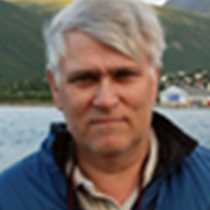Svalbard, Edgeoya
Ice, ICE and more ICE! Through the night our perfect platform to explore deep into the high Arctic, National Geographic Explorer sailed around the southern tip of Spitsbergen, Sørkapp, and headed northeast. The western side of Spitsbergen is strongly influenced by the very last piece of the Gulf Stream (North Atlantic Current) but on the eastern side of Svalbard the cold westerly Siberian current creates a totally different environment, cold and icy.
Already by breakfast we were able to feel something, some even thought it was an “earthquake”! The captain was pushing the ice strengthened ship through heavy sea ice. As you walked outside the landscape was white as far you can see. Now we are in polar bear country. Our goal was to try to get between Halvmånøya and Edgeøya and area almost filled with pack-ice.
Here we were surrounded by ice and for sure, soon we found a mighty “white monster”, the polar bear. With all the ice and also pressure ridges it was hard to get any closer and the bear itself was in sleeping mood and had no interest to investigate us. Instead, as we scanned the ice we encountered closer to the ship our first walrus. Most likely a male and he did put up a great show rolling, basking and also doing the thing walruses do best throughout the Arctic summer, sleeping. The setting for High Arctic we now had was almost everything you ever can ask for: a polar bear, a walrus on the sea ice and ice as far you can see.
After lunch we moved further northwest along Edgeøya and conditions were ideal for a Zodiac cruise around the island Bölscheøya. It is known for its birdlife. As soon the Zodiac fleet was in the water reports came about Puffins, Little Auks, Great Skua. Still maybe the most fascinating bird to watch here is the Red Phalarope. Pictured here is the female. Oddly enough, with this bird species it is the female to be the most pristine and colorful. She flies around to make the display and mates with a male, builds the nest and lays the eggs. As soon as she is finished, she will depart and start to locate a new male. After a few males she departs south and leaves the males to incubate the eggs and later take care of the chicks.
Svalbard is maybe not the core area for the Atlantic Puffin. This is Iceland, but we do find some smaller colonies and today we were lucky.
Right before our dinner call from Gaylord, our headwaiter, our bridge team was able to spot a polar bear on the ice. Dinner was of course delayed and instead we were able to watch a polar bear having a fiesta on a seal.
After dinner we continued sailing along the SW side to Edgeøya and through sparsely distributed sea ice. More walrus were counted drifting on ice flows. We gathered in the lounge to hear more about the polar bear life at Svalbard through a presentation.




